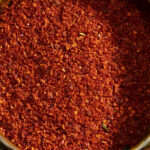South Africa is a country renowned for its diverse culinary landscape, which reflects the cultural melting pot that defines the nation. Among the myriad of traditional dishes that hold a special place in South African cuisine, bobotie samoosas stand out as a delicious delicacy with a rich cultural significance. These savory treats are a fusion of two beloved culinary traditions, bringing together the flavors of bobotie, a traditional South African dish, and the portable convenience of samoosas, a popular Indian-inspired snack.
Bobotie, often considered the national dish of South Africa, is a fragrant and savory baked dish with Cape Malay roots. It is believed to have originated from the Indonesian influences brought by the Cape Malay community during the colonial era. Bobotie typically consists of spiced minced meat, often lamb or beef, mixed with onions, breadcrumbs, milk-soaked bread, and an array of aromatic spices such as curry powder, turmeric, cumin, and cinnamon. The mixture is then topped with a custard-like egg mixture and baked until golden and set.
On the other hand, samoosas have their origins in Indian cuisine, brought to South Africa by Indian immigrants who arrived in the country during the 19th century. Samoosas are triangular pastries filled with a savory mixture, commonly made from spiced potatoes, onions, peas, and sometimes meat. They are typically deep-fried until golden and crispy, making them a popular street food and snack in South Africa.
The fusion of bobotie and samoosas represents a beautiful amalgamation of cultures and flavors, showcasing the multicultural heritage of South Africa. Bobotie samoosas retain the aromatic and spiced nature of bobotie, while incorporating the convenient and portable format of samoosas. This unique combination has become a favorite snack and appetizer, enjoyed at social gatherings, family celebrations, and even as a quick street food option.
Beyond their culinary appeal, bobotie samoosas hold cultural significance as a symbol of unity and diversity. South Africa’s history is marked by a complex tapestry of cultural exchanges, as various communities have come together to form the nation’s vibrant mosaic. The blending of Cape Malay and Indian influences in bobotie samoosas reflects the harmonious coexistence and fusion of different cultures, creating a sense of shared heritage.
Bobotie samoosas also serve as a bridge between communities, bringing people together to appreciate and celebrate the diversity that defines South Africa. The act of preparing and sharing these delicacies at gatherings fosters a sense of camaraderie, as individuals from different backgrounds bond over a mutual love for these flavorsome snacks. In this way, bobotie samoosas become a tangible expression of cultural exchange and understanding.
Moreover, the popularity of bobotie samoosas has spread beyond South Africa, with international food enthusiasts and chefs incorporating these delectable treats into their culinary repertoire. The unique combination of flavors and the story they tell make them a standout addition to global culinary experiences. By showcasing the fusion of South African and Indian influences, bobotie samoosas contribute to the broader appreciation of diverse cuisines and encourage cultural exploration.
Bobotie samoosas are not just a delicious snack but a cultural treasure that exemplifies the diverse heritage of South Africa. Their fusion of Cape Malay and Indian flavors represents the country’s history of cultural exchange and unity. As these mouthwatering treats continue to capture the hearts and palates of people both locally and internationally, bobotie samoosas play a significant role in celebrating South Africa’s culinary legacy and promoting cultural appreciation across borders.








